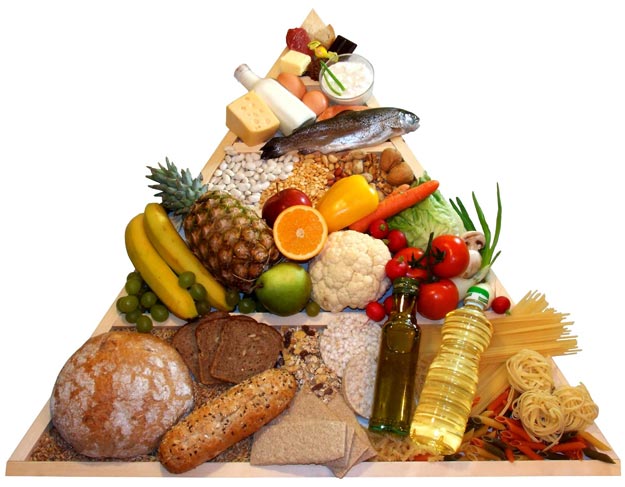Your Ship Deserves A Crew In Top Form

The Food Pyramid
The Food Pyramid is a visual image illustrating the contributions of each group of foods that make up a healthful nutrition package. Foods recommended for frequent consumption are situated at the base and foods that should be eaten sparingly at the top.
All available information about the crew and the expected physical activity level is used to calculate the fixed daily food rate per person.

Adapted to your crew
The below reflects the traditional Western (US and Western European) food pyramid. Belma Catering of course adapts its offerings to propose variations based on diets from other regions, such as represented in the Mediterranean, Asian, and Latin American pyramids.
As an example, our Asian alternative will:
- Feature rice and noodles as part of the grain group
- Put fish and shellfish and dairy in the same section of the pyramid
- Avoid milk, as most Asians lack sufficient enzyme required to digest lactose.
Basic Food Pyramid
Categories
Grains
The grain category includes foods derived from wheat, rice, oats, barley or other grains. 2 Subcategories: whole grains and refined grains.Vegetables
Includes any vegetable and 100 percent vegetable juice. The vegetables can be consumed in many forms, e.g. cooked, or raw.Fruits
Similar to the vegetable group, the fruit group includes any fruit or 100 percent fruit juice. Fruits can be pureed, frozen, fresh or dried.Milk
The milk group includes all dairy foods, such as yogurt and cheese, which keep their calcium. Also calcium fortified soy beverages or soy milk.Meat and Beans
Food group composed of meat, poultry, eggs, nuts and seeds. Low-fat meats, poultry, nuts and seeds tend to have healthier fats than meat.Fats and Oils
Sunflower oil, canola oil, chicken or pork fat, butter, and solid margarine. Also olives, avocados, mayonnaise, and salad dressings.Two Suggestions To Optimize Your Budget !

Prepare fresh broth
It is the base of a lot of soups and sauces. Soups are perfect to process all kind of vegetables, meat or poultry leftovers.

Recover Leftovers
Try to recover as much leftovers as possible and cool / store them properly. Example: Oven baked chicken. If there is some meat left, store it at 4° C covered and labeled, to recover it the day after in a chicken salad.
Some Useful Tips
- Label your stock
-
Label foods with their expiration date and store them so the first ones you use are the first to expire.
- Bake fresh bread
-
It smells and tastes better, it is more healthy, and best of all … it’s less expensive.
- Use only fresh products
-
Check fruits and vegetables every day and use the ripest ones first.
- Store food quickly
-
Avoid exposure to room temperature and store leftover food as soon as possible.
- Limit usage of frying oil
-
Avoid using too much frying oil and heating it on too high of a temperature. It is simply not healthy.
- Push fresh fruit
-
Make sure to put fruit that needs to be consumed in sight of the crew.
- Use a sanitation plan
-
Put together a calendar for recurring cleaning jobs (refrigerator, dry stores, …).

